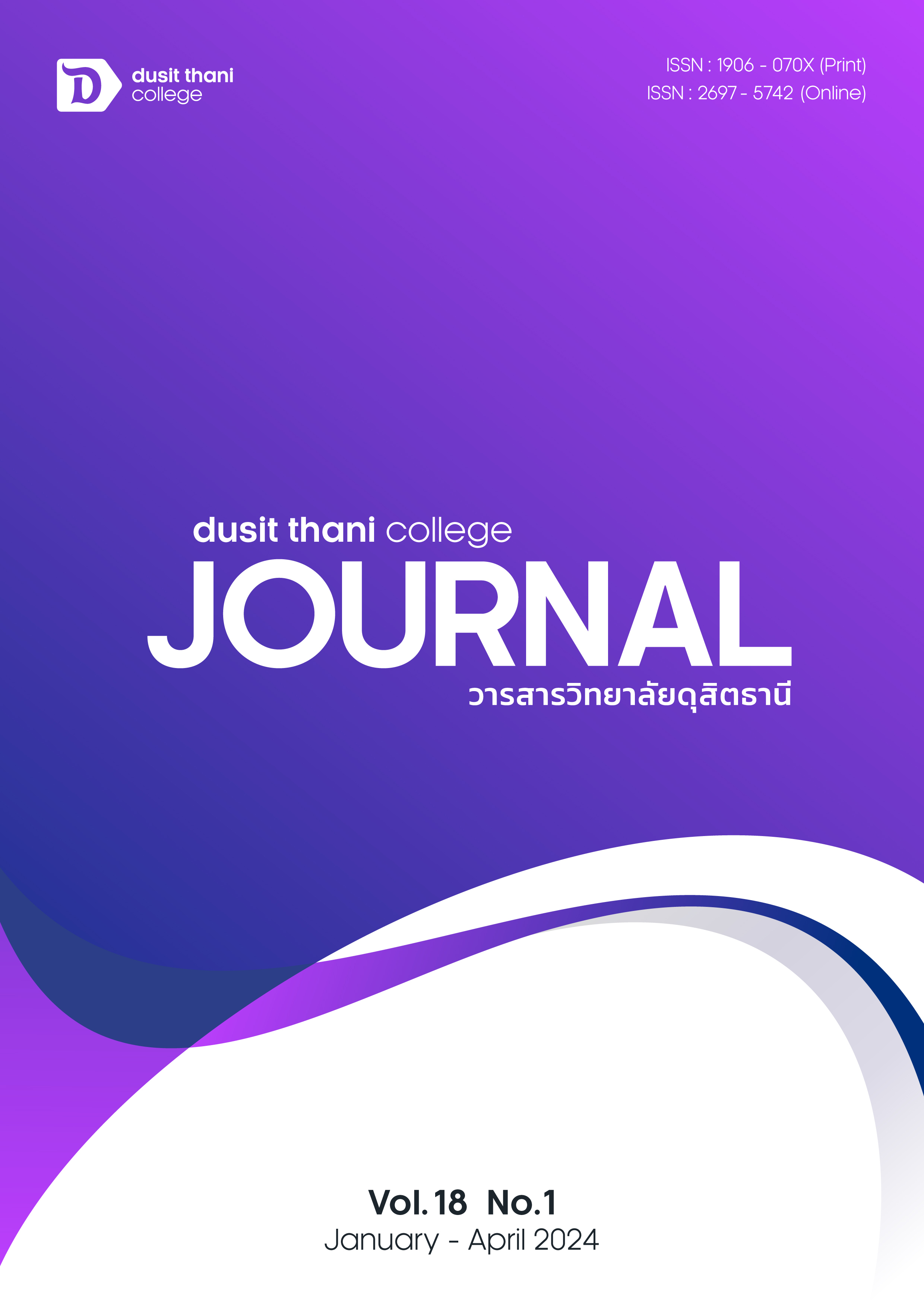The Development Guidelines of Spiritual Tourism Components Impacting Behaviors and Satisfaction Among Thai Tourists in Chacheongsao Province
Main Article Content
Abstract
The purpose of the research to study ways to develop the potential of spiritual tourist attractions that affects behavior and perception of tourist attraction elements in Chachoengsao Province The objectives are 1) to study the potential of spiritual tourist attractions in Chachoengsao Province 2) to study the behavior of Thai tourists towards spiritual tourist attractions in Chachoengsao Province 3) to study Thai tourists' perceptions of tourist attraction elements of spiritual tourist attractions in Chachoengsao Province 4) To study guidelines for developing spiritual tourist attractions in Chachoengsao Province. Use a mixed research method by quantitative research method, 400 sets of questionnaires to study the perception of the image of the elements of spiritual tourist attractions from tourists who visited the tourist attractions. The results were analyzed with statistics of mean, percentage, variance, T-test, F-test (One Way ANOVA) and Chi-square statistics. Qualitative research method uses in-depth interviews to collect data from key informants. Data were analyzed using content analysis. The results of the study found that overall potential of spiritual tourism destinations in Chachoengsao Province is at a good level. Elements of value and attractiveness and tourism activities within tourist attractions are at an excellent level. Access to tourist attractions is at a good level. The service aspect of the tourist attractions and facilities is at a moderate level and the accommodation aspect is at a low level. Tourism behavior has the objective of traveling to spiritual tourist attractions to pay homage and ask for blessings according to beliefs. Most arrived by private vehicle with their families. None of the travelers required special physical assistance and had not previously traveled to the spiritual destination. Most of the activities that tourists come to spiritual tourist attractions include paying homage to Buddha and general sacred things within the area. Normally there will be spending around 101-300 baht within the area. Knowing about tourist attractions through the recommendations of relatives and friends and have a desire to return to spiritual tourist attractions again after this time. Overall perception of the image of elements of spiritual tourist attractions in Chachoengsao Province is high. When considering each component, it was found that respondents perceived the image of attractiveness and activities the most. Ancillary Services, amenities, and accessibility are high level. As for the topic of accommodation has a moderate level of awareness. Relationship between demographic factors and travel behavior It was found that only travelling methods was not related to demographic factors.
Article Details

This work is licensed under a Creative Commons Attribution-NonCommercial-NoDerivatives 4.0 International License.
Article Screening Policy
- All research and academic articles to be published must be considered and screened by three peer reviews in the relevant field / article.
- All articles, texts, illustrations and tables published in the journal are the personal opinions of the authors. Editors don't always have to agree. And no responsibility whatsoever is the sole responsibility of the author.
- The articles to be published must never be published. Where did you first publish? And not in the consideration of other journals If the audit found that there has been a duplicate publication It is the sole responsibility of the author.
- Any article that the reader sees as being plagiarized or impersonated without reference. Or mislead the work of the author Please let the journal editor know it will be your greatest blessing.
References
Department of Religion, Ministry of Culture. (2009). Ceremonies and Customs. First Edition. Bangkok. Department of Religion, Ministry of Culture.
Jittinchulee Boonchuai and Sichon Kulampha. (2020). Water Eco-Tourism Routing in Sisachorakhenoi Subdistrict, Bang Sao Thong District, Samut Prakan Province. Journal of Business Administration and Social Sciences Ramkhamhaeng University.
Nattarika Panmas. (2017) Satisfaction and tourist behavior of water sport tourists in Koh Samui. SuratThani. Bangkok. Bangkok University.
Nollawach Khunla. (2018). A development of sport tourism of Samui Island. Prince of Songkla University.
Office of the Eastern Economic Corridor Policy Committee. (2018). The Plan of Action for Development and Promotion of Tourism in the Eastern Economic Corridor Development Zone. Bangkok: Eastern Economic Corridor (EEC).
Office of the Permanent Secretary, Ministry of Tourism and Sports. (2021). Report on the Economic Situation of Tourism, Volume 2 (1): 55-69
Pelasol, J. (2012). Igcabugao: A Potential Tourist Destination in the Southern Part of Iloilo, Philippines. International Peer Reviewed Journal. The United Kingdom.
Phra Kriengkrai Dhammañãno. (2021). A Study on Approaches For Promoting Buddhist Tourism Potentials of Wat Phrachaoyai-Ongtue Ubon Ratchathani Province. Bangkok. Maahachulalongkornrajavidyalaya University
Prames Pichphandaycha. (2018). Religious Tourism Management of Hong Kong Island Affecting Thai Tourists. Bangkok. Thammasat University.
Pranithas Phookheed, et al. (2022). Perception of Tourism Image in Ubon Ratchathani. Journal of Academic Affairs, Eastern University of Management and Technology. Volume 19 (2): 101-117.
Sarunporn Suravichai. (2018). The potential of developing spiritual tourist attractions Case study of Chiang Mai province. National Institute of Development Administration.
Sarunporn Suravichai. (2020). Destination Development for Spiritual Tourism and Tourist Behavior in Chiang Mai Province. National Institute of Development Administration.


